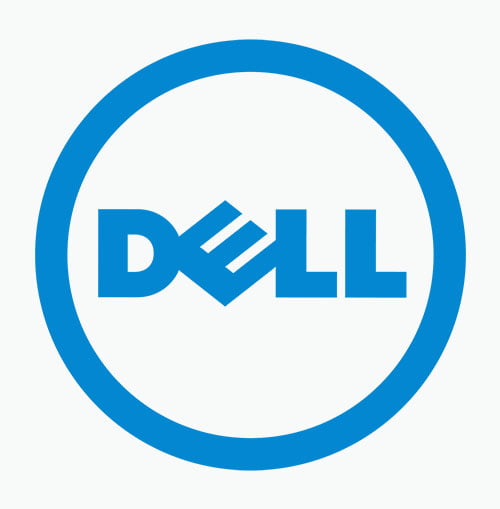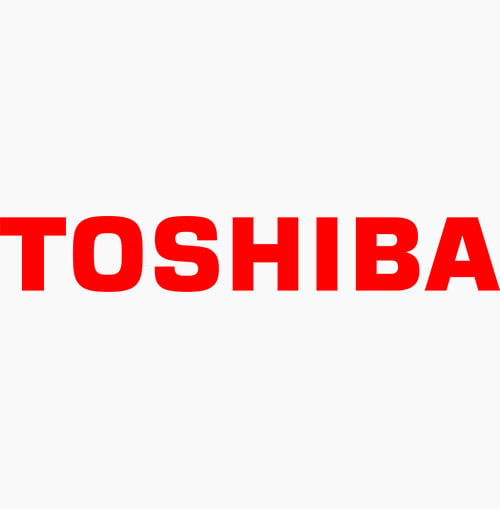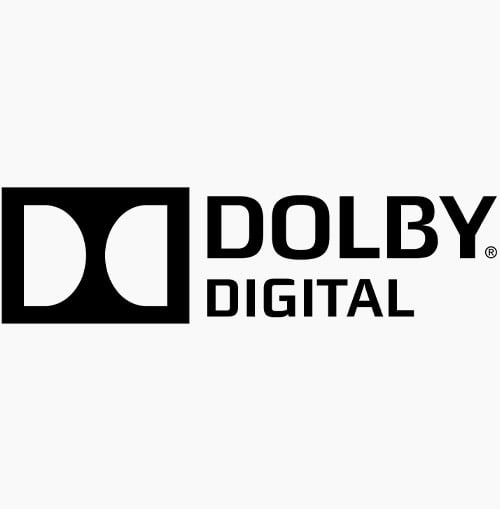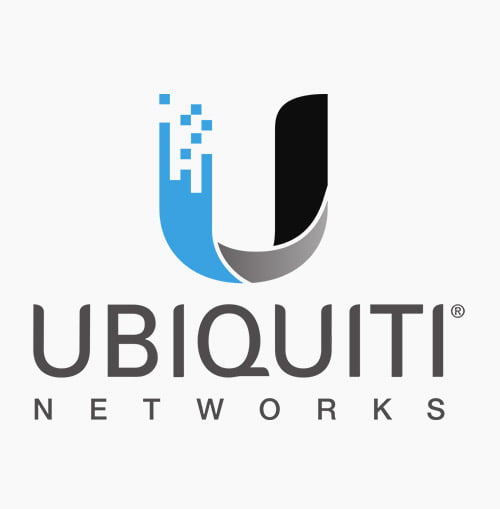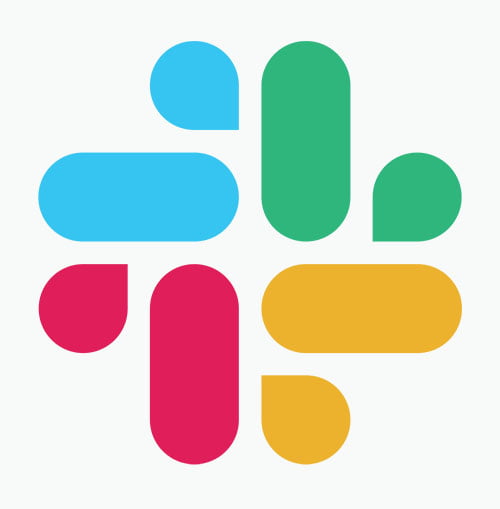Customized Computer Programming and Application Development Solutions for Companies in Kampala, Uganda

What is Computer Programming and Application Development Kampala, Uganda:
Computer Programming and Application Development refer to the processes involved in creating software applications. Computer programming involves writing and structuring code using programming languages, while application development encompasses the entire lifecycle of creating an application, from conception to deployment and maintenance.
Need Programmers & Developers?

Importance of Computer Programming and Application Development Services in Kampala, Uganda:
Computer Programming and Application Development are integral to the advancement of technology, offering tailored solutions, fostering innovation, and contributing to the efficiency and growth of businesses in an increasingly digital world. These aspects collectively shape the modern landscape of industries and enable organizations to thrive in dynamic and competitive environments.
1. Innovation and Automation:
– Computer Programming and Application Development play a pivotal role in driving innovation by creating software that automates manual tasks. Through innovative coding practices, developers streamline processes, leading to increased efficiency and productivity in various industries.
2. Digital Transformation:
– Businesses undergo digital transformation through the development of applications. Applications enable organizations to modernize their operations, adopt new technologies, and stay competitive in a rapidly evolving digital landscape.
3. User Engagement and Experience:
– Well-designed applications contribute significantly to user engagement and experience. Through intuitive interfaces, responsive designs, and seamless functionalities, developers enhance the overall satisfaction of users, whether they are consumers or employees.
4. Customized Business Solutions:
– Application Development enables businesses to create custom solutions tailored to their specific needs. Whether it’s a customer relationship management (CRM) system, an inventory management tool, or a project management application, customized software addresses unique business challenges.
5. Global Connectivity:
– Applications facilitate global connectivity by enabling users to interact and collaborate across geographical boundaries. This is particularly crucial in today’s interconnected world, where businesses operate on an international scale and individuals communicate globally.
6. Enhanced Decision-Making:
– Advanced applications provide businesses with data-driven insights, enabling informed decision-making. Through data analysis and visualization tools, organizations can gain a deeper understanding of their operations and make strategic choices.
7. Improved Efficiency and Productivity:
– Computer Programming optimizes business processes, leading to improved efficiency and productivity. Automation of repetitive tasks, streamlined workflows, and the integration of technologies contribute to time and resource savings.
8. Adaptability to Changing Needs:
– Application Development allows businesses to adapt to changing market demands and technological advancements. Through regular updates and modifications, organizations can ensure that their software remains relevant and aligned with evolving industry trends.
9. Security and Compliance:
– Security measures embedded in applications safeguard sensitive data and protect against cyber threats. Developers implement encryption, and authentication protocols, and adhere to secure coding practices to ensure compliance with privacy and security standards.
10. Fostering Innovation Ecosystems:
– The development of applications fosters innovation ecosystems by encouraging collaboration and the creation of third-party integrations. Application programming interfaces (APIs) enable developers to build on existing platforms, creating a network of interconnected software solutions.

How much do Computer Programming and Application Development Services cost in Kampala, Uganda?
Explore our tailored Computer Programming and Application Development Services Pricing Table, designed to give you a comprehensive overview of our offerings. Each service package is crafted to meet specific needs, with details on descriptions, key features, estimated timeframes, and associated costs. Please note that these timeframes are approximations, and we encourage you to connect with us for a personalized quote aligned with your project’s unique requirements.
A tailored Pricing Table Computer Programming and Application Development Services in Kampala, Uganda
NO. |
Service Package |
Description |
Key Features |
Estimated Time |
Estimated Price |
| 1 | Basic Development | Entry-level development for simple applications | Standard features, limited customization | 4-8 weeks | $5,000 – $15,000 |
| 2 | Advanced Development | Complex applications with custom features | Advanced functionality, tailored to specific needs | 8-16 weeks | $15,000 – $50,000 |
| 3 | E-commerce Platform | Online store development with payment integration | Product catalogue, secure payment gateways | 12-20 weeks | $20,000 – $70,000 |
| 4 | Custom Software Solution | Tailored application for specific business needs | Custom modules, extensive user interactions | 16-24 weeks | $25,000 – $100,000 |
| 5 | Mobile App Development | Android or iOS app development | Native or hybrid apps, responsive design | 10-18 weeks | $10,000 – $40,000 per platform |
| 6 | Database Design and Optimize | Database creation, optimization, and management | Efficient data storage, query optimization | 6-12 weeks | $5,000 – $20,000 |
| 7 | Security Assessment | Comprehensive security audit and improvements | Vulnerability identification, encryption | 4-8 weeks | $8,000 – $25,000 |
| 8 | Maintenance and Support Plan | Ongoing support, updates, and bug fixes | Regular updates, bug resolution, priority support | Ongoing | Starting from $1,000/month |
Computer Programming and Application Development Services Kampala, Uganda Conclusion:
Thank you for considering our Computer Programming and Application Development Services in Kampala, Uganda. We’re committed to transparency and excellence in delivering projects on time and within budget. If you have any questions or require further clarification on the estimated timeframes and costs, please don’t hesitate to reach out. We look forward to the opportunity to bring your vision to life.

10 examples of common Computer Programs and Applications developed for clients in Kampala, Uganda, along with their common usage:
These examples showcase the diverse range of Computer Programs and Applications tailored to meet the specific needs of businesses and organizations in Kampala, Uganda. Each application addresses unique challenges, contributing to increased efficiency, productivity, and overall business success.
1. Point Of Sale (POS)Financial Management System:
Designed for businesses and organizations to manage financial transactions, track expenses, generate reports, and facilitate budgeting, helping in financial planning and compliance.
2. Inventory Management Software:
Enables businesses to efficiently track and manage inventory levels, streamline order fulfilment, and minimize stockouts. Particularly useful for retail, manufacturing, and distribution sectors.
3. Healthcare Information System:
Developed for healthcare institutions to manage patient records, appointment scheduling, and billing. Improves overall patient care and enhances administrative efficiency in clinics and hospitals.
4. School/Educational Management System:
Used by educational institutions to manage student records, class schedules, grading, and communication. Streamlines administrative processes and enhances collaboration between educators, students, and parents.
5. E-commerce Platform:
Facilitates online buying and selling, providing a platform for businesses to showcase products, manage orders, process payments securely, and enhance the overall customer shopping experience.
6. Property Management System:
Designed for real estate agencies and property managers to streamline tasks such as rent collection, tenant management, property maintenance tracking, and financial reporting.
7. Human Resources Management System (HRMS):
Helps organizations manage employee information, attendance, payroll processing, and performance evaluations. Enhances HR processes and ensures compliance with labour regulations.
8. Mobile Banking Application:
Provides a secure platform for users to perform banking transactions, check account balances, transfer funds, and pay bills through their mobile devices, promoting financial inclusion.
9. Customer Relationship Management (CRM) Software:
Aids businesses in managing customer interactions, tracking leads, and improving customer satisfaction. Enhances communication, sales, and marketing efforts.
10. Agricultural Management System:
Developed for farmers and agribusinesses to manage crop planning, harvest schedules, inventory, and sales. Supports data-driven decision-making in the agricultural sector.

Key Components of our Computer Programming and Application Development services in Kampala, Uganda:
-
Coding and Programming Languages:
– Computer programming involves writing instructions for computers using programming languages such as Python, Java, C++, and others. Each language has its strengths and is chosen based on the requirements of the application.
-
Algorithms and Logic:
– Developers design algorithms, step-by-step procedures for solving problems, and implement logical structures to ensure the software functions as intended.
-
Application Architecture:
– Application development involves planning the structure and design of the software, including how different components will interact. This includes choosing between monolithic, microservices, or other architectural patterns.
-
User Interface (UI) and User Experience (UX) Design:
– Application development includes designing the user interface and user experience to ensure a visually appealing and user-friendly interaction with the software.
-
Database Management:
– Applications often require databases to store and retrieve data. Developers design and implement database structures, and use database management systems (DBMS) to interact with the data.
-
Testing and Debugging:
– Rigorous testing is conducted to identify and fix errors or bugs in the code. This ensures the reliability and functionality of the application.
-
Version Control:
– Developers use version control systems to manage changes to the source code over time. This helps track modifications, collaborate effectively, and revert to previous versions if necessary.
-
Deployment and Release:
– Once the application is ready, it is deployed to servers or cloud platforms, making it accessible to users. Deployment may involve configuring servers, setting up databases, and ensuring security measures are in place.
-
Maintenance and Updates:
– Ongoing maintenance involves fixing bugs, addressing user feedback, and updating the application to adapt to changes in technology or business requirements.
-
Security Measures:
– Developers implement security features to protect against potential threats, such as data breaches or unauthorized access. This includes encryption, authentication, and secure coding practices.

Key aspects that define our Computer Programming and Application Development services
At Isazeni Solutions in Kampala, Uganda, we specialize in providing highly personalized Computer Programming and Application Development solutions. Our experienced team of developers and programmers is dedicated to transforming your unique business ideas into functional and scalable software applications. Here are ten key aspects that define our services:
-
Tailored Solutions:
-
Expert Team:
-
Collaborative Process:
-
End-to-End Services:
-
Mobile App Development:
-
Web Application Development:
-
Custom Application Development:
-
Software Solutions:
-
Proven Track Record:
-
Commitment to Quality:
We understand that each business has its own set of challenges and requirements. Our approach is rooted in crafting customized solutions that align perfectly with your company’s goals.
Our team comprises seasoned professionals well-versed in a variety of programming languages. With a deep understanding of the latest technologies, we ensure cutting-edge solutions for your business.
We believe in collaboration throughout the development journey. Your input is invaluable, and we work closely with you to ensure the end product exceeds your expectations.
From ideation to deployment, our services cover the entire spectrum of application development, providing a seamless experience for our clients.
We specialize in creating intuitive and responsive mobile applications for both Android and iOS platforms, catering to the ever-evolving needs of your audience.
Our expertise extends to the development of robust web applications. We create solutions that are not only visually appealing but also highly functional and user-friendly.
Our team is proficient in crafting applications from the ground up, ensuring that they specifically address your unique business requirements and challenges.
We offer end-to-end software development services, covering everything from conceptualization and design to coding, testing, and deployment.
Isazeni Solutions has successfully delivered numerous projects, earning the trust and satisfaction of businesses in Kampala and beyond.
Our unwavering dedication to delivering high-quality, efficient, and scalable software solutions sets us apart. We prioritize the quality of our work to ensure lasting success for our clients.

Our Computer Programming and Application Development process from start to finish in 10 points:
By following these comprehensive steps, the Computer Programming and Application Development process ensures the successful creation, deployment, and maintenance of customized software solutions that meet the specific needs of clients in Kampala, Uganda.
-
Requirement Analysis:
– Thorough Understanding: The process begins with a comprehensive analysis of client requirements. This involves in-depth discussions and consultations to gain a clear understanding of the application’s purpose, features, and target audience.
– Documenting Specifications: Detailed documentation is created, outlining the functional and non-functional requirements, user stories, and any specific technical constraints. This serves as the foundation for the entire development process.
-
System Design:
– Architecture Planning: Based on the requirements, the system architecture is planned. This includes defining the overall structure, components, and the relationship between them. Architectural decisions, such as choosing between monolithic or microservices architecture, are made at this stage.
– Database Design: The structure of the database is designed, specifying data models, relationships, and data storage requirements. This step ensures efficient data management and retrieval.
-
Prototyping:
– User Interface (UI) Prototyping: Prototypes of the user interface are created to provide a visual representation of the application. This helps in obtaining client feedback early in the process, allowing for adjustments before full-scale development.
– Functional Prototypes: Developers may also create functional prototypes to demonstrate core functionalities. This aids in validating technical feasibility and gaining insights into user interactions.
-
Coding and Programming:
– Implementation: The actual coding phase begins based on the design and prototypes. Developers follow best coding practices, adhering to coding standards and guidelines. Continuous collaboration ensures that the code aligns with the specified requirements.
– Version Control: Developers use version control systems, such as Git, to manage changes and maintain a history of the codebase. This allows for collaboration, rollback to previous versions if needed, and ensures code integrity.
-
Testing:
– Unit Testing: Individual components are tested in isolation to ensure their correctness and functionality. This includes testing functions, methods, and modules.
– Integration Testing: Different components are integrated and tested together to identify and address issues related to interactions between various parts of the application.
– User Acceptance Testing (UAT): The application is tested with end-users to validate its overall functionality, usability, and alignment with client expectations.
-
Debugging and Optimization:
– Identifying and Fixing Issues: Any bugs or issues identified during testing are addressed through debugging. Developers work to resolve issues promptly to ensure the application’s stability.
– Performance Optimization: The code and application performance are optimized for speed, responsiveness, and resource efficiency. This includes refining algorithms, minimizing code redundancy, and optimizing database queries.
-
Documentation:
– Technical Documentation: Detailed documentation is created, covering aspects such as code structure, APIs, databases, and system architecture. This documentation serves as a reference for future development and maintenance.
– User Documentation: Instruction manuals and user guides are prepared to help end-users understand and navigate the application effectively.
-
Deployment:
– Setting Up Servers: The application is deployed to servers or cloud platforms. Server configurations are optimized, and necessary security measures are implemented to ensure a smooth deployment process.
– Continuous Integration/Continuous Deployment (CI/CD): Automated CI/CD pipelines are set up to streamline the deployment process, ensuring that changes are efficiently tested and deployed to production environments.
-
Monitoring and Maintenance:
– Monitoring Tools: Monitoring tools are implemented to track the application’s performance, detect issues, and gather data on user interactions. This aids in proactive issue resolution and continuous improvement.
– Patch Updates and Upgrades: Regular updates, patches, and version upgrades are performed to address security vulnerabilities, introduce new features, and enhance overall performance.
-
Client Training and Support:
– Training Sessions: Clients are provided with training sessions to familiarize them with the application’s functionalities, administrative tools, and any necessary maintenance procedures.
– Ongoing Support: Post-launch, ongoing support is offered to address any issues, answer queries, and provide assistance. This ensures a positive post-deployment experience for clients.
100 frequently asked questions (FAQs) about Computer Programming and Application Development
1. What services do you offer in Computer Programming and Application Development?
2. How can custom software benefit my business?
Custom software ensures tailored solutions for your unique needs, enhances efficiency through automation, improves user experiences, and supports scalability and growth.
3. What industries do you specialize in for application development?
4. Can you provide examples of projects you’ve worked on in the past?
5. How do I request a quote for my project?
6. What technologies do you commonly use in your development projects?
We specialize in technologies like Python, Java, C#, JavaScript frameworks (React, Angular), .NET, SQL/NoSQL databases, AWS, and Azure.
7. What is the typical duration for completing a custom software project?
The duration varies based on complexity but typically ranges from 4 to 16 weeks.
8. How do you ensure the security of the applications you develop?
We implement secure coding practices, encryption, regular security audits, and compliance with industry standards.
9. Do you provide ongoing support and maintenance after the project is completed?
10. Can you assist with software integration into our existing systems?
Absolutely. We ensure seamless integration with your current systems for optimal performance.
11. What is your development process from start to finish?
Our process includes requirements gathering, design, development, testing, deployment, and ongoing maintenance.
12. How do you handle project requirements and scope changes?
We discuss scope changes transparently, providing updated timelines and cost estimates.
13. Do you follow Agile or Waterfall development methodologies?
We primarily use Agile for flexibility and faster feedback but adapt based on project needs.
14. How is communication managed throughout the development process?
Regular updates via email, meetings, and collaboration tools ensure seamless communication.
15. What is your approach to project timelines and deadlines?
16. How do you ensure the quality of the code and the final product?
We conduct code reviews, automated/manual testing, and adhere to best practices.
17. Can I be involved in the development process and provide feedback?
Yes, client feedback is integral. We encourage your involvement at every stage.
18. What kind of testing do you conduct during the development cycle?
We perform unit, integration, system, user acceptance, and security testing.
19. How do you handle version control and code repositories?
We use Git for version control, ensuring a robust and traceable codebase.
20. What is your strategy for debugging and troubleshooting?
We employ logging tools, debugging frameworks, and systematic analysis to resolve issues efficiently.
21. What programming languages do your developers specialize in?
Python, Java, JavaScript, PHP, C#, Swift, Kotlin, and more.
22. Can you work with both front-end and back-end technologies?
Yes, we specialize in full-stack development.
23. Do you have experience with mobile app development (iOS/Android)?
Yes, we create native and cross-platform mobile applications.
24. How do you ensure cross-browser compatibility in web development?
Rigorous testing using tools like BrowserStack ensures compatibility across browsers.
25. What databases and data storage solutions are you proficient with?
MySQL, PostgreSQL, MongoDB, Redis, and cloud storage solutions like AWS S3.
26. Are you experienced in cloud-based application development?
Yes, we develop and deploy solutions on AWS, Azure, and Google Cloud.
27. Can you integrate third-party APIs into our software?
Absolutely, including payment gateways, CRM tools, and social media APIs.
28. Do you provide solutions for IoT (Internet of Things) applications?
Yes, we design and develop IoT-enabled applications and systems.
29. How do you stay updated on the latest industry trends and technologies?
Our team attends workshops, seminars, and certifications regularly.
30. Can you develop applications for both Windows and macOS platforms?
Yes, we deliver desktop applications for Windows, macOS, and cross-platform solutions.
31. How do you determine the cost of a software development project?
The cost is based on project complexity, scope, required features, technologies, timeline, and team size. We provide a detailed estimate after discussing your requirements.
32. Are there any hidden costs in your project estimates?
No, we provide a transparent breakdown of costs, ensuring no hidden charges.
33. Can you provide a breakdown of costs for different project phases?
Yes, we outline costs for each phase: requirements gathering, design, development, testing, deployment, and post-launch support.
34. Do you offer fixed-price or hourly billing for your services?
Both options are available. Fixed pricing is ideal for well-defined projects, while hourly billing suits evolving requirements.
35. How do you handle additional features or changes to the project scope?
We discuss and approve changes with updated timelines and cost estimates before implementation.
36. Are there any licensing or subscription fees associated with the software?
Only if third-party tools or platforms are required, and these will be discussed upfront.
37. What payment methods do you accept for your services?
We accept bank transfers, mobile payments, and other locally convenient payment methods.
38. Do you offer discounts for long-term projects or retainer agreements?
Yes, we provide discounts for long-term collaborations or retainer-based agreements.
39. Can you provide references for previous clients who have had similar budgets?
Certainly, upon request, we can connect you with clients for references.
40. How often will I receive updates on the progress of my project?
Weekly updates are standard, with additional updates for critical milestones.
41. What communication channels do you use for client interactions?
Email, phone, video calls (Zoom/Google Meet), and collaboration platforms like Slack or Microsoft Teams.
42. Do you have a dedicated project manager for each client?
Yes, each project is assigned a dedicated manager to streamline communication and coordination.
43. How do you handle communication across different time zones?
We schedule meetings and updates at mutually convenient times to accommodate time zone differences.
44. Can I schedule regular meetings to discuss the project’s status?
Absolutely. Regularly scheduled meetings ensure alignment and address concerns promptly.
45. Is there a specific point of contact for addressing project-related concerns?
Yes, the project manager serves as your primary contact throughout the project.
46. What collaboration tools do you use for project management and communication?
We use tools like Trello, Jira, and Asana for project tracking and Slack or Microsoft Teams for communication.
47. Can you provide access to project documentation and code repositories?
Yes, clients receive access to documentation and repositories via platforms like GitHub or Bitbucket.
48. How do you manage feedback and incorporate changes during development?
49. How do you ensure the security of sensitive data during development?
We implement secure storage, encrypted communication channels, and restricted access protocols.
50. What measures do you take to protect against data breaches?
Regular audits, security patches, and adherence to secure coding practices mitigate risks.
51. Is our intellectual property protected during and after the project?
Yes, your intellectual property is fully protected through NDAs and contractual agreements.
52. Can you provide non-disclosure agreements (NDAs) for our project?
Absolutely, NDAs are standard practice to ensure confidentiality.
53. How do you handle security updates and patches post-deployment?
We provide regular updates and critical patches as part of our support services.
54. Are your developers trained in secure coding practices?
Yes, our team undergoes regular training on secure coding standards and protocols.
55. Can you perform security audits on existing applications?
Yes, we offer comprehensive security audits to identify and address vulnerabilities.
56. What type of post-launch support and maintenance do you offer?
57. Do you provide regular software updates and patches?
Yes, regular updates, including security patches and new features, are part of our maintenance offerings.
58. How quickly can you respond to and resolve post-launch issues?
We aim to respond within 24 hours for urgent issues and resolve them within 72 hours or less, depending on complexity.
59. Is there a warranty period for your software after deployment?
60. Can you provide ongoing support on a retainer basis?
Yes, we have retainer packages for long-term support, tailored to your needs.
61. How do you approach user interface (UI) and user experience (UX) design?
We focus on user-centered design, combining research, prototyping, and iterative testing to create intuitive and engaging experiences.
62. Can you create wireframes and prototypes for our application?
Absolutely. We use tools like Figma or Adobe XD to create detailed wireframes and interactive prototypes.
63. What considerations do you take for mobile responsiveness in web design?
We ensure designs are fully responsive, adapting seamlessly to various screen sizes and devices for optimal user experience.
64. Do you conduct usability testing during the development process?
Yes, usability testing is an integral part of our process to validate designs and improve functionality based on user feedback.
65. Can you create visually appealing and intuitive user interfaces?
Yes, we excel in creating aesthetic, user-friendly interfaces that align with your brand identity and user needs.
66. Are you familiar with industry-specific regulations for software development?
Yes, we work with regulations such as GDPR, HIPAA, PCI DSS, and others based on industry requirements.
67. Can you ensure compliance with data protection laws and regulations?
Absolutely. We design software with compliance in mind, integrating data protection and privacy standards.
68. Do you have experience developing applications for regulated industries?
Yes, we’ve developed solutions for industries like healthcare, finance, and education that require strict compliance.
69. How do you handle accessibility and inclusivity in your software designs?
70. Can you assist with certifications or audits related to our industry?
71. How do you ensure that the software is scalable for future growth?
We use scalable architectures, modular designs, and cloud-based solutions to support future growth.
72. Can you accommodate increased user loads or data volumes?
Yes, our solutions are built to handle high user loads and large data volumes with minimal performance impact.
73. What considerations do you take for future feature additions or expansions?
74. Can you assist with integrating new technologies into our existing software?
75. How easily can the application be adapted to changing business requirements?
76. Do you provide training for our team on how to use the developed software?
Yes, we offer training sessions tailored to your team’s needs, either remote or on-site.
77. What kind of documentation is provided for the software and its features?
We provide technical documentation, API documentation, and user guides as standard deliverables.
78. Can you create user manuals and guides for our internal use?
Yes, we develop comprehensive manuals and quick-start guides for seamless onboarding.
79. Is training provided remotely or on-site?
Both options are available depending on your preferences and location.
80. How do you handle training for large teams or diverse user groups?
We organize scalable training sessions with recorded materials, Q&A forums, and hands-on workshops.
81. Can you provide examples of similar projects you’ve successfully completed?
Yes, we can share project summaries and examples upon request.
82. Do you have case studies or success stories related to your past projects?
Yes, our case studies showcase successful outcomes and problem-solving approaches.
83. Can you share references from clients who have hired you for similar work?
Absolutely, we can connect you with clients for testimonials and references.
84. Have you worked with businesses in our industry before?
Yes, we have experience across various industries and adapt to specific business needs.
85. How do you showcase your expertise and experience on your website?
Through portfolios, testimonials, case studies, and detailed service offerings.
86. How quickly can you respond to queries or concerns during the project?
We typically respond within 4–8 hours for standard queries and faster for urgent issues.
87. Are you available for emergency support outside regular business hours?
Yes, we offer emergency support through a dedicated team.
88. What is your typical response time for support tickets or emails?
Our response time is usually under 24 hours, with prioritization for critical tickets.
89. Do you have a dedicated support team for urgent issues?
Yes, we maintain a dedicated team to handle urgent and high-priority concerns.
90. How do you handle communication during public holidays or weekends?
We provide scheduled support during holidays and weekends as per agreed terms.
91. How is your development team structured for a typical project?
Our team includes developers, designers, QA engineers, and a dedicated project manager.
92. Can I communicate directly with the developers working on my project?
Yes, with proper scheduling, direct communication is encouraged for clarity and feedback.
93. Do you have in-house designers, or do you collaborate with external designers?
We have in-house designers but can collaborate with external experts if needed.
94. What is the level of experience and expertise of your development team?
Our team comprises experienced professionals with expertise in various technologies and industries.
95. How do you ensure a collaborative and cohesive team environment?
Regular team meetings, agile workflows, and shared goals promote collaboration.
96. How much involvement is expected from the client during the development process?
Your involvement includes providing feedback, attending regular reviews, and approving key milestones.
97. Can I provide feedback and request changes throughout the project?
Absolutely, our iterative process welcomes ongoing feedback and change requests.
98. What tools or platforms do you use for collaborative project management?
99. Is there a designated point of contact for addressing client concerns?
Yes, the project manager is your primary point of contact for all queries and concerns.
100. How do you ensure that the final product meets the client’s expectations and goals?
TECHNOLOGY PARTNERS WE USE IN WESITES & RELATED SERVICES
For years we have acquired strategic partnerships enabling us to serve you better
Ready to start on your project? let’s jump into it.


















